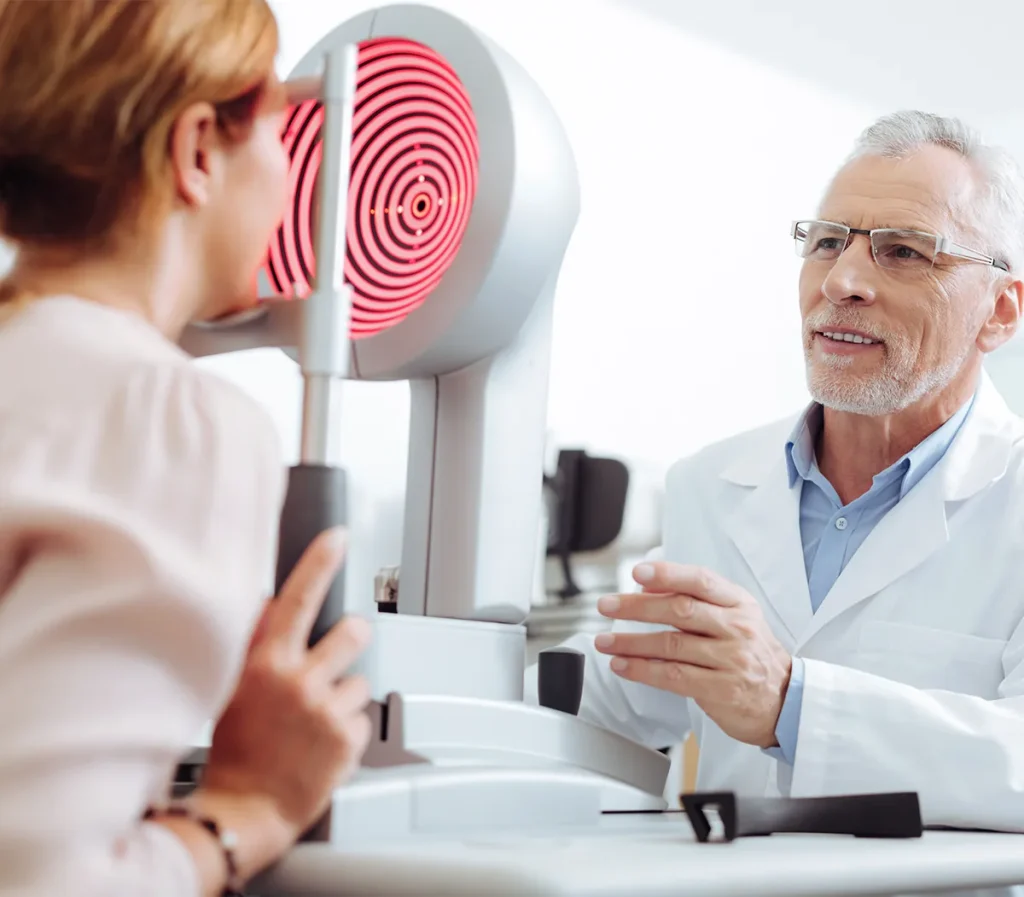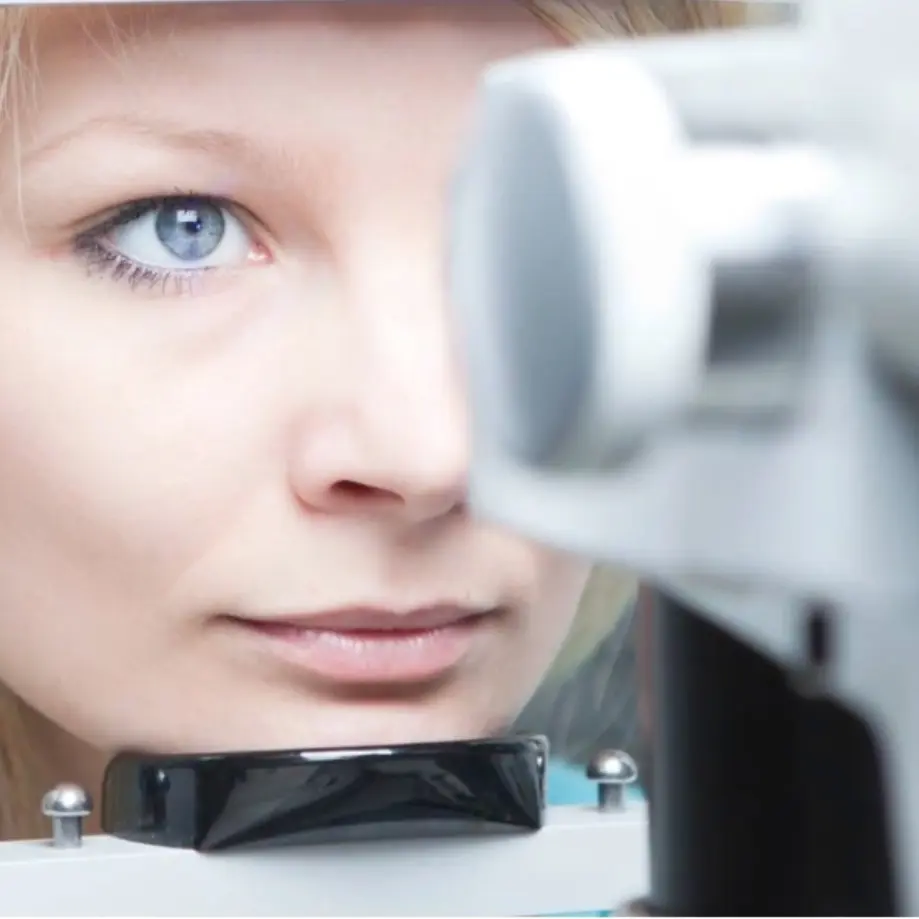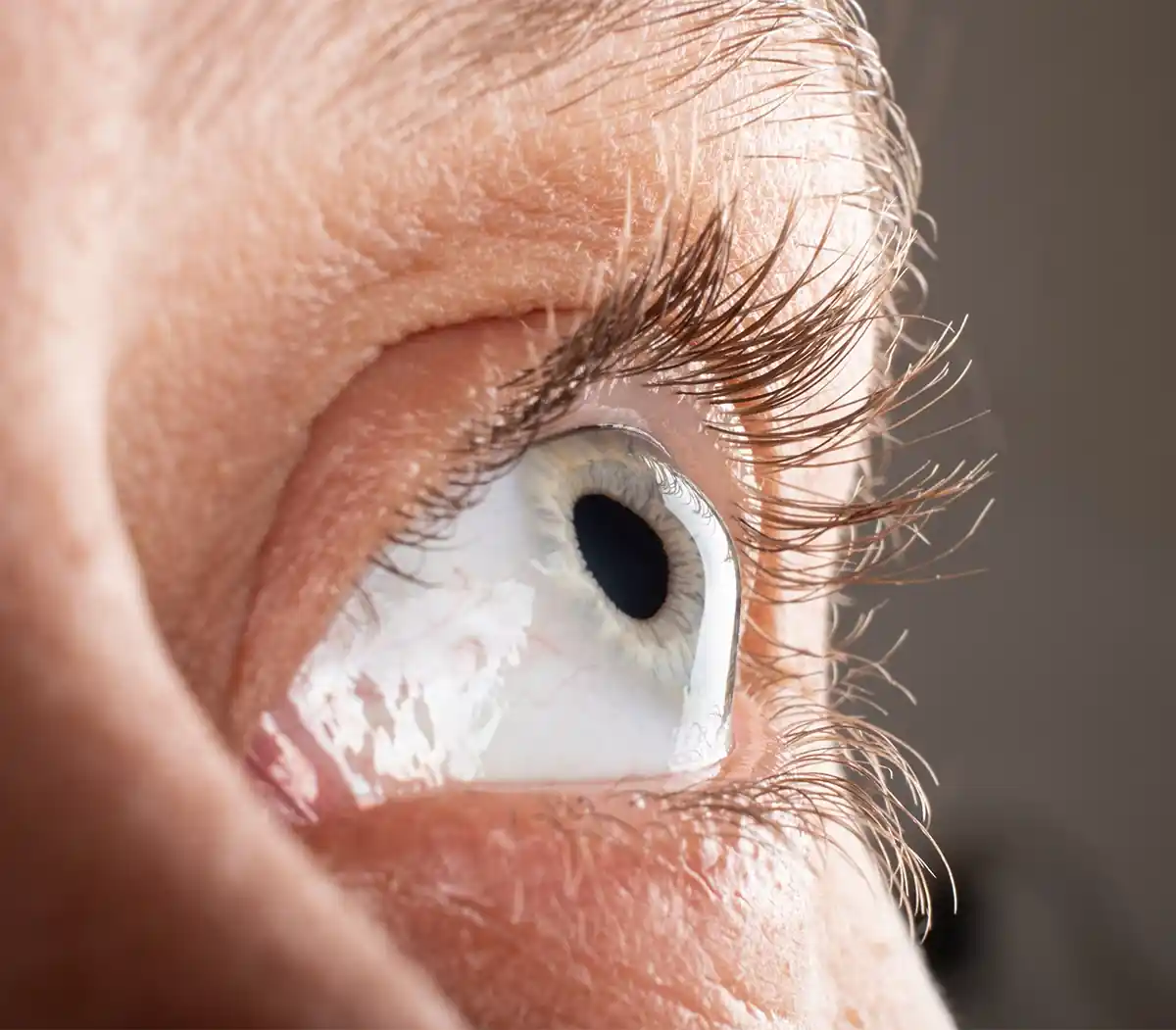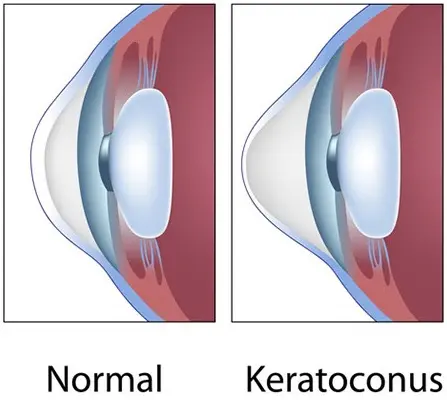
Keratoconus
Keratoconus is a degenerative eye disease that causes the cornea to become thin and irregularly shaped. A healthy cornea is round, curved like a dome, focusing light onto the retina and allowing you to see clearly. When keratoconus has developed, the cornea bulges into a cone shape, which prevents your eyes from focusing properly. The condition can affect one or both eyes, and as it progresses, you may experience increasingly distorted and blurry vision. This is due to the cornea becoming more irregular in shape and scar tissue forming.

The cause of keratoconus is unknown, but research has shown rubbing your eyes can aggravate the disease’s effects. Keratoconus can progress for about 10 to 20 years, at which point it typically begins to slow or stabilize, usually when patients are in their mid 40s to 50s in age.

Symptoms
Patients with keratoconus usually begin to notice symptoms in their teenage years or 20s. Mild cases often involve glare, sensitivity to light, and eye irritation. You may notice your eyeglasses prescription changing drastically as your vision continues to blur and distort. Additionally, as the cornea becomes more cone-shaped, the cornea can swell acutely due to tiny cracks. As these cracks heal over the course of weeks or months, scar tissue forms, which further affects your vision.

Detection & Diagnosis
The symptoms of keratoconus are similar to those of other eye conditions, which is why you should consult with an experienced ophthalmologist to be examined. The disease can usually be diagnosed using a slit lamp microscope. Early keratoconus can be identified with certain corneal photography devices which can map the steepness pattern of the cornea. Keratoconous will clinically appear as corneal thinning, curvature of the cornea, as well as scarring and stress lines of the cone.
Treatment for Keratoconus
Currently, there is no medication available to control the progression of keratoconus. However, there are several treatment options to treat the symptoms. Your eye doctor may prescribe eye drops to treat itching, rubbing, and swelling. You may also be fitted with specialty contact lenses. Patients with keratoconus typically benefit from either gas permeable (GP) contact lenses or scleral contact lenses. GP lenses are rigid and scleral lenses are larger than average contact lenses, and these customizable lenses can hold their shape over a distorted cornea better than typical soft contact lenses. If these methods are not sufficient, or if the disease is at a more advanced level, you may require a corneal transplant to improve your vision.

Corneal Transplant Surgery for Keratoconus
A cornea transplant, also called keratoplasty or corneal grafting, is a surgery in which corneal tissue from a donor is used to replace a damaged or diseased cornea. This procedure can restore vision and relieve pain. The highly skilled cornea surgeons at Virginia Eye Consultants are experienced in corneal transplant surgery. Learn More About Corneal Transplant Surgery at Virginia Eye Consultants.
Contact Virginia Eye Consultants
If you have any questions regarding keratoconus, or would like to schedule an examination with one of our eye care specialists, please
The doctors at Virginia Eye Consultants have either authored or reviewed the content on this site.

























